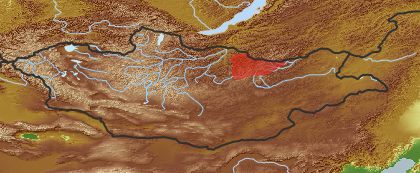| Class: | ferns |
| Order: | Lycopodiales |
| Family: | Lycopodiaceae |
| Genus: | Lycopodium |
| Scientific name: | Lycopodium clavatum L. |
| Name acc. to: | Gubanov 1996 |
| Herbar: | list records |
| open map in a new window |  |
| Habitat: | Coniferous mossy forests (Grubov 2001). |
| Habit (i)general appearance of a plant | |
| Growth form: (i)Herb, shrub, tree or climber. | herb (i)Herbaceous, erect plant, up to 2m high, mostly with a leafy shoot; if perennial, shoots die to the ground each season, shoots are not woody
example: Artemisia pectinata   inherited by genus Lycopodium: herb inherited by genus Lycopodium: herb
|
| Special growth forms or habits: | creeper (i)Low, mat-forming herbaceous plant, growing along the surface of the ground or just beneath the surface with rhizomes like a mat
example: Potentilla anserina, Lycopodium annotinum   inherited by genus Lycopodium: creeper inherited by genus Lycopodium: creeper
|
| Flower (i)reproductive portion of the plant, consisting of sepals, petals, stamens, and pistils | |
| Ovary position: (i)For entirely or partly fused carpels, describe their position in relation to the insertion point of perianth leaves (best done by doing a longitudinal section of a flower). | absent (i)Without ovary: male flowers  inherited by order Lycopodiales: absent inherited by order Lycopodiales: absent
|
| Root / shoot below ground (i)plant part below ground (in most cases), including below ground shoots, without leaves | |
| Root type: (i)Organisation of the roots. | homorhizous (i)Many equal roots
example: Monocotyledonae  inherited by vasc. plants: homorhizous inherited by vasc. plants: homorhizous
|
| Distribution (i)region where the plant is likely to be found | |
| Distribution (Veg. Zones): (i)acc. to Grubov 1952 | Khentei (i)In distribution data often named as '2' 
acc. to: Gubanov 1996 |
| Plant Status | |
| Red list status: (i)Rare Mongolian plants | very rare (Shiirevdamba 2007) (i)Very rare plant
|